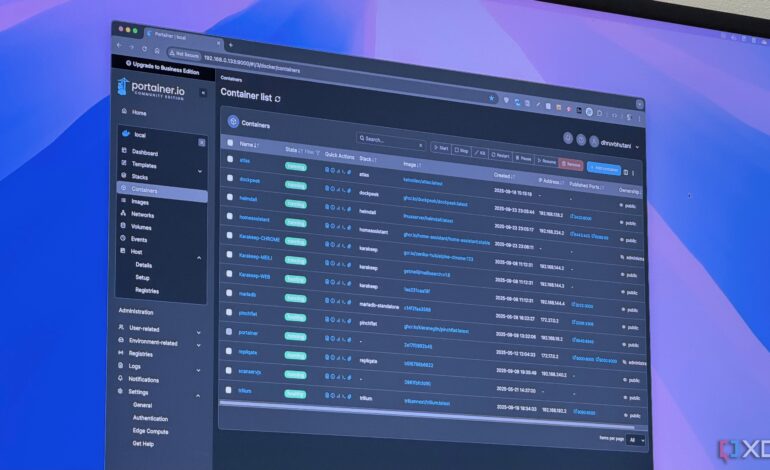User Transforms Synology NAS with Portainer for Enhanced Management

A user has successfully enhanced the management of their Synology NAS by replacing its built-in interface with Portainer, a popular tool for managing Docker environments. This shift has significantly improved usability, making it easier to deploy applications and monitor services.
The Synology NAS originally featured an adequate management interface, allowing users to perform basic tasks like managing shared folders and monitoring storage health. However, as the user increasingly relied on Docker containers for applications and services, the limitations of the Synology interface became apparent. Advanced Docker management options were buried under multiple menus, making it cumbersome to navigate.
Setting Up Portainer on Synology NAS
Installing Portainer on the Synology NAS was a straightforward process. With Docker already set up, the user simply needed to run a single container for Portainer. After creating necessary volumes and mapping ports, Portainer was operational. The setup included creating an admin account, which allowed Portainer to automatically connect to the Docker environment running on the NAS.
Once operational, Portainer’s user-friendly dashboard immediately stood out. Instead of sifting through layers of menus, the user could view all containers, images, volumes, and networks from one central location. By clicking on the Containers tab, they gained instant access to logs, status updates, and a web console for each container. Portainer streamlined the process of setting up new containers and stacks, eliminating the frustration of navigating the Synology interface.
Enhanced Workflow with Portainer
The most significant impact of using Portainer has been on the user’s daily workflow. Previously, deploying applications like a note-taking app involved considerable effort with the Synology interface. Portainer simplified this by allowing the user to drop in a Compose file, which the interface managed seamlessly. The integration with Docker Stacks proved particularly effective, enabling quick deployment of open-source applications.
Portainer also functions as a monitoring tool, providing an easier way to access logs. The user noted that when encountering installation issues, the ability to view logs directly within Portainer significantly streamlined troubleshooting processes. A built-in terminal environment allows for rapid adjustments, and restarting containers is as simple as clicking a button.
After months of utilizing Portainer, the user reports they can no longer envision returning to the default Synology NAS interface for container management. While the Synology interface remains useful for backend tasks like managing shared folders or snapshots, it is now primarily relegated to infrequent use. Portainer has become the user’s preferred dashboard, offering a level of control and customization that the Synology interface lacks.
For those frustrated with their NAS’s built-in container management tools, Portainer offers a compelling alternative. Its user-friendly design and enhanced functionality may very well transform the way users manage their NAS systems.






